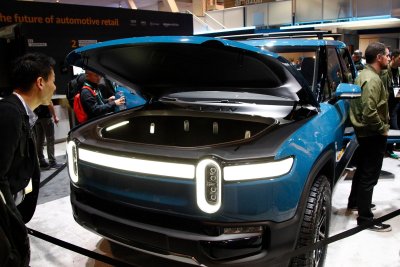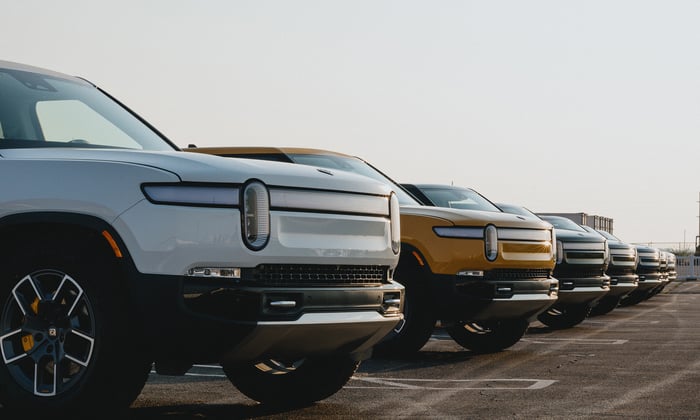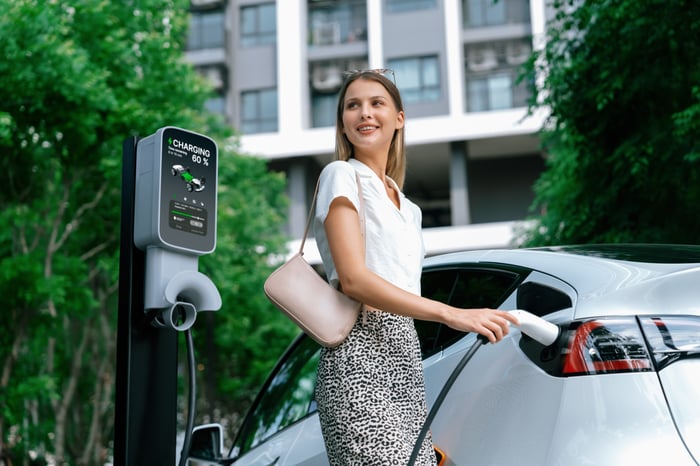President Trump’s “Big, Beautiful Bill” is reshaping the electric-vehicle (EV) landscape.
When a new president enters office, it’s not uncommon for changes to take place, either through the signing of bills into law or via executive orders. Since President Donald Trump was inaugurated a little over eight months ago, we’ve witnessed a slew of adjustments made to Social Security, as well as the passage of his flagship tax and spending law, the “Big, Beautiful Bill.”
While Trump’s big, beautiful bill introduced a number of tax breaks for select groups, including a higher standard tax deduction for eligible seniors from 2025 through 2028, and partial deductions for tips and overtime pay for eligible workers during the same four-year timeline, it also removed some important benefits.

President Trump delivering his State of the Union address. Image source: Official White House Photo.
Specifically, Donald Trump’s law changes the fortunes of the electric-vehicle (EV) industry and its leading pure-play manufacturers, which includes Tesla (TSLA 0.61%), Rivian Automotive (RIVN -2.15%), and Lucid Group (LCID 0.56%), as of today, Sept. 30.
EV makers bid adieu to an important dangling carrot
Among the laundry list of tax and credit adjustments in the president’s big, beautiful bill is a newly shortened timeline that ends the $7,500 tax credit consumers received when purchasing a qualifying new EV or plug-in hybrid, as well as the $4,000 credit when buying a used EV. This EV credit was available to new vans, SUVs, and trucks priced below a manufacturer’s suggested retail price (MSRP) of $80,000, as well as new sedans with an MSRP of no more than $55,000.
Though this credit (officially known as the Clean Vehicle Credit) was initially slated to end in 2032, based on the Inflation Reduction Act, Donald Trump’s big, beautiful bill brings this new EV purchase credit to an end today, Sept. 30. Qualifying new vehicles purchased after today will no longer be eligible for the $7,500 credit.
This EV credit applied to a significant percentage of the vehicles Tesla sells, including its Model 3 Sedan, all-wheel drive Model X SUV, single and dual motor Cybertruck, and multiple variants of the Model Y SUV. While Rivian’s and Lucid’s EVs are generally priced above the MSRP range where tax credits end, both companies had been angling leases of upcoming models as a way to take advantage of the $7,500 EV credit.
This EV credit was akin to a dangling carrot that allowed pure-play electric-vehicle manufacturers to be more price-competitive with internal combustion engine (ICE) vehicles. Undercutting traditional ICE vehicles on price is viewed as a borderline necessity with EV charging infrastructure still somewhat lacking on a nationwide basis.
Without this upfront cost advantage, it’s likely that future buyers will opt for traditional gas- and diesel-powered vehicles due to the availability of ICE fueling infrastructure and opportunity cost. Whereas it takes just a few minutes to refuel an ICE vehicle, it can take an hour to a full day, depending on the type of charger used, to juice up an EV.

Image source: Tesla.
But wait — there’s more bad news
However, ending this lucrative tax credit that incentivized the purchase of EVs isn’t the only way Donald Trump’s big, beautiful bill is disrupting pure-play EV manufacturers.
When the president signed his flagship tax and spending bill into law on July 4, 2025, it put an end to corporate average fuel economy (CAFE) fines, as well as retroactively eliminated fines for 2022 model years and all subsequent years.
CAFE regulations represent the standard of how far vehicles must travel on a gallon of fuel. These figures, which are set by the National Highway Traffic and Safety Administration, are designed to promote more fuel-efficient vehicles over time and lessen the reliance on fossil fuels. Automakers that failed to meet these standards were subject to fines. With CAFE civil penalties removed, courtesy of Trump’s law, there’s no longer any financial incentive for automakers to meet sky-high mile-per-gallon targets.
This is almost certain to have an adverse impact on the ability of Tesla, Rivian Automotive, and Lucid Group to generate profits.
Government agencies provide automotive regulatory credits to these pure-play EV manufacturers, which sell these tax credits to legacy automakers that are short of compliance targets. For Tesla especially, selling these tax credits plays a key role in its profitability. Without regulatory credits, Elon Musk’s company would have reported a pre-tax loss during the first quarter of 2025.
With the teeth behind CAFE regulations removed by the big, beautiful bill, the market for automotive regulatory credits in the U.S. is going to be severely depressed. It has the potential to expose the fact that Wall Street’s EV darling, Tesla, has been consistently generating more than half of its pre-tax income from unsustainable and/or non-innovative sources, such as selling automotive regulatory credits and earning interest income on its cash.
It’ll also minimize regulatory tax credit revenue for Rivian and Lucid. Whereas Tesla has at least been profitable on a recurring basis for five consecutive years (with the help of automotive regulatory credits), Rivian and Lucid continue to lose money hand over fist as they ramp up operations and attempt to carve out their own unique niches in the automotive marketplace. Despite substantial cash piles for both companies and brand-name financial backing, long-term success is far from a guarantee.
Though I wouldn’t go so far as to say Donald Trump drove a dagger through the heart of the EV industry, his actions are almost certain to thin the herd and make it considerably more difficult for pure-play electric-vehicle makers to compete with traditional ICE vehicles.










